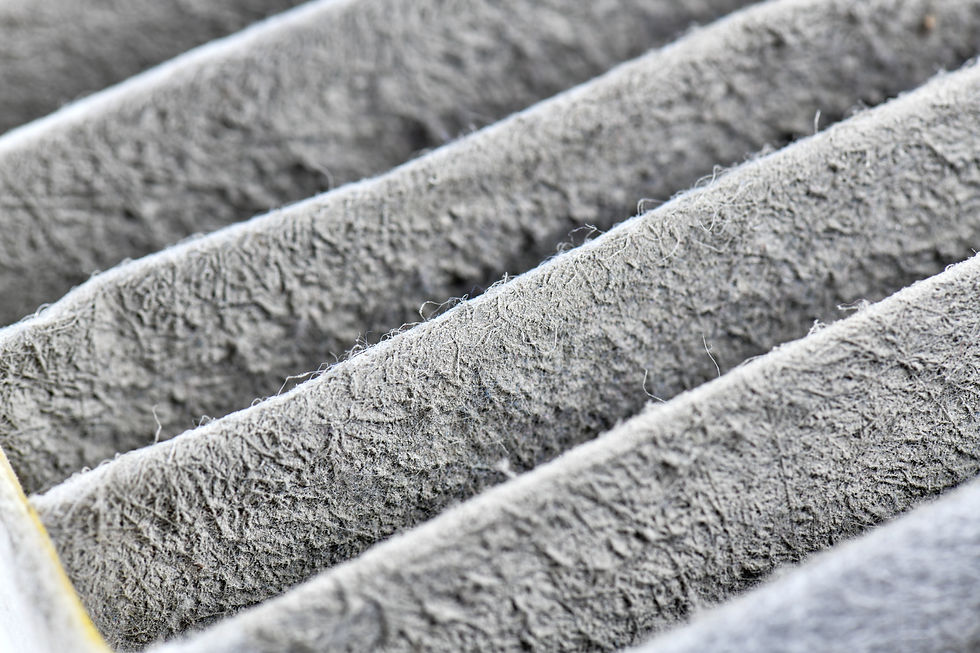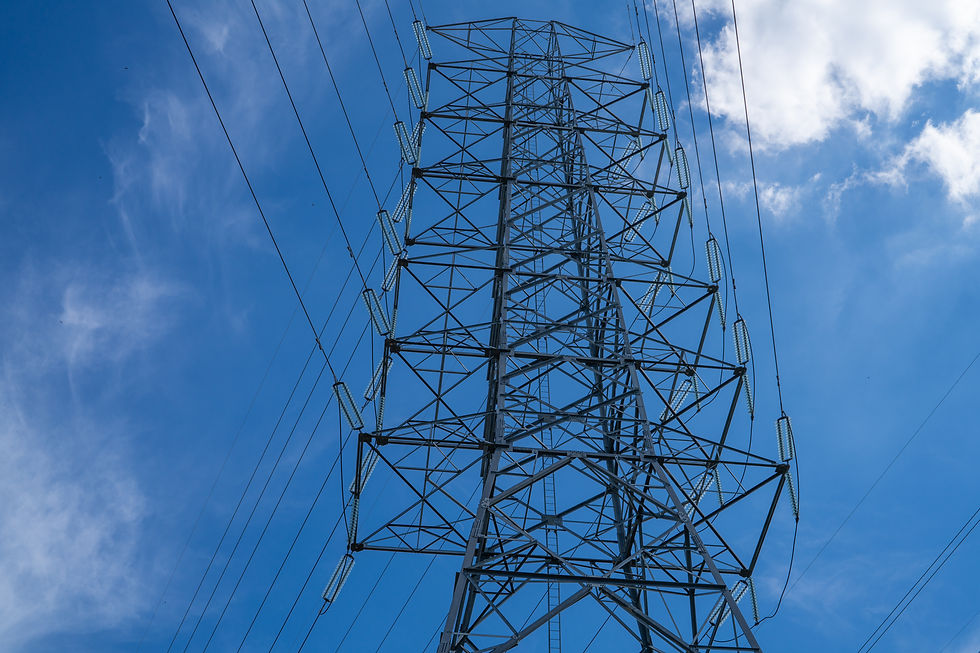Revolutionizing Buildings in 2024: Trends Transforming Indoor Spaces
- Ava Montini

- Dec 5, 2024
- 5 min read
Buildings today are where we live, work, and connect—and they need to do more than just function. In 2024, the focus was on making them efficient, adaptable, and aligned with modern demands like sustainability and occupant health.
For facility managers and building professionals, the challenge is clear: how to improve energy use, meet regulations, and enhance tenant satisfaction—all while staying within budget. Here’s a look at the trends shaping the future of buildings and the technologies driving smarter, healthier, and more resilient spaces.

Sustainability as the Cornerstone of Modern Buildings
Buildings account for approximately 37% of global energy and process-related CO₂ emissions and 34% of global energy demand, underscoring the critical need for sustainable solutions in the built environment. This demand has driven the development and adoption of technologies that address both environmental impact and operational efficiency.
One such area of innovation is low-pressure air filtration systems. These systems are designed to enhance indoor air quality—a critical factor for occupant health—while also minimizing the energy demands of HVAC systems. By reducing the resistance to airflow (known as pressure drop), these advanced filtration technologies can lower energy consumption and contribute to sustainability certifications such as LEED and WELL, which emphasize energy efficiency and healthier indoor spaces.
Traditional HVAC systems, while effective at meeting basic performance needs, often require significant energy input to maintain baseline standards. In comparison, modern sustainable technologies provide a more efficient, cost-effective approach without sacrificing performance. For facility managers, this means an opportunity to align building operations with environmental goals, improve the well-being of occupants, and meet evolving regulatory requirements—all while managing long-term operational costs more effectively.

Smarter Spaces Through Technology
The smart building market is projected to grow from USD 72.6 billion in 2021 to USD 121.6 billion by 2026, driven by the adoption of IoT, AI, and predictive analytics. These technologies are transforming buildings from static structures into responsive ecosystems. For instance, IoT-enabled sensors can monitor air quality in real time, triggering ventilation adjustments to maintain optimal conditions. Predictive analytics allows facility managers to identify and address inefficiencies before they become costly problems, saving both time and resources.
Unlike older systems that rely on periodic manual checks, smart buildings integrate real-time monitoring with adaptive systems, enabling a more proactive approach. Facilities that implement IoT-based predictive maintenance can achieve significant cost savings and operational improvements. According to McKinsey & Company, such approaches can reduce maintenance costs by up to 25%, decrease unplanned outages by up to 50%, and extend the operational life of machinery.
These benefits stem from the ability to monitor equipment health in real time, predict failures before they occur, and schedule maintenance activities more effectively. By leveraging IoT and analytics, organizations not only enhance operational efficiency but also improve tenant satisfaction through increased reliability and reduced downtime.

Wellness-Driven Design
As research continues to reveal the profound impact of indoor air quality (IAQ) on health, wellness-focused design has become a priority. Studies from Harvard T.H. Chan School of Public Health have demonstrated that indoor air quality (IAQ) significantly affects cognitive function. The Global CogFx study, involving 302 office workers across six countries, found that improved IAQ led to better cognitive performance. Additionally, Americans spend approximately 90% of their time indoors, where pollutant levels can be 2 to 5 times higher than outdoor levels. In response, facility managers are investing in biophilic design, thermal comfort enhancements, and advanced filtration systems to create healthier indoor environments.
A shining example of wellness-focused design can be seen in modern office buildings that integrate natural elements and prioritize occupant well-being. Biophilic design—incorporating features like green walls, indoor gardens, and natural lighting—has been shown to reduce stress and boost productivity among employees. Coupled with improved ventilation and thermal comfort systems, these spaces create an environment where occupants feel more energized and connected. One case study found that wellness-certified buildings saw higher employee retention rates and a measurable increase in work satisfaction, emphasizing the value of designing with health and well-being at the forefront. These principles don’t just benefit the occupants—they also enhance the long-term value of the building, making it more attractive to tenants and investors alike.
Preparing for Uncertainty
The past decade has underscored the need for resilience in building systems, particularly in the face of challenges like wildfires, extreme weather events, and fluctuating energy demands. For example, during heatwaves or cold snaps, energy grids are often strained, and buildings with adaptive energy systems—such as smart energy storage or dynamic load management—can maintain functionality while reducing their reliance on peak energy. These systems help ensure consistent performance even when external conditions push infrastructure to its limits.
Proactive strategies like integrating renewable energy sources or implementing predictive energy management also allow buildings to anticipate and mitigate potential disruptions. These approaches not only reduce energy costs but also contribute to a more stable and sustainable grid. As energy resilience becomes increasingly critical, buildings capable of adapting to these demands play a key role in ensuring reliability and sustainability for the broader community.
Data-Driven Operations
Real-time data is transforming building management, offering facility managers tools to optimize energy usage, extend the lifespan of equipment, and enhance overall tenant satisfaction. By integrating predictive maintenance programs, facilities can leverage embedded sensors to monitor equipment performance, identify inefficiencies, and trigger alerts before failures occur. This proactive approach significantly reduces costly repairs and unplanned downtime. Implementing predictive maintenance can reduce maintenance costs by 18% to 25% while increasing asset availability by 5% to 15%, underscoring its role in improving both operational reliability and cost efficiency.
Unlike traditional methods that rely on reactive repairs after a problem arises, data-driven operations provide actionable insights that enable facility managers to anticipate issues before they escalate. This not only improves system performance but also enhances tenant comfort by ensuring seamless building functionality. As more facilities adopt analytics-driven strategies, they unlock measurable benefits, including reduced operational costs, improved system reliability, and higher tenant satisfaction—all essential for maintaining competitive, high-performing spaces in an increasingly dynamic market.

Tenant and Occupant Expectations Evolving
Post-pandemic, expectations for indoor spaces have shifted dramatically. Occupants now demand more than basic functionality—they seek healthier environments, visible sustainability initiatives, and seamless integration of technology that enhances their experience. Facility managers are rising to the challenge by implementing systems that prioritize transparency and well-being. Features like real-time building data and energy-saving dashboards optimize building operations while providing occupants with accessible, actionable insights that build trust and foster loyalty.
This emphasis on occupant-centric upgrades marks a significant departure from traditional facility management, which often prioritized operational efficiency over user experience. By addressing these evolving demands, modern buildings are not only improving tenant satisfaction but also driving higher retention rates and stronger relationships. Tangible improvements—like cleaner air, energy-efficient systems, and clear communication of these efforts—are becoming the new standard for successful facilities, setting them apart in a competitive market.
As 2024 concludes, the built environment is undergoing a profound transformation. Facility managers are no longer just maintaining buildings—they’re shaping them into spaces that align with the needs of people, businesses, and the planet. The trends driving these changes—from sustainable technologies to smart systems and wellness-focused designs—offer immense opportunities for those ready to adapt.























